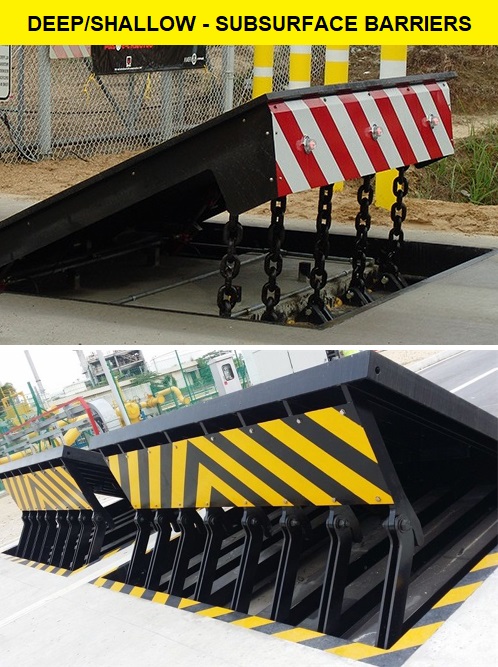How Wedge Barriers can Save You Time, Stress, and Money.
Table of ContentsWedge Barriers Fundamentals ExplainedSome Known Factual Statements About Wedge Barriers

Our Wedge Barriers Diaries
g., springtime support 65 )may be taken care of to completion of the springtime rod 58 to allow compression of the springtimes 60. As the springtimes 60 are compressed in between the springtime sustains 62, the springtime setting up 54 produces a force acting upon the web cam combined to the spring pole 58 in an instructions 66. For instance, the continuing to be force put on
the webcam to release the wedge plate 16 may be offered by an electromechanical actuator 84 or various other actuator. Thus, the springtime setting up 54 and the actuator 84(e. g., electromechanical actuator)may operate with each other to translate the web cam and raise the wedge plate 16.
As stated over, the spring assembly 54 applies a consistent pressure on the camera, while the electromechanical actuator may be managed to put in a variable pressure on the web cam, consequently making it possible for the lifting and decreasing( i. e., deploying and withdrawing )of the wedge plate 16. In particular embodiments, the continuous pressure applied by the springtime assembly 54 may be adjustable. g., electromechanical actuator) is impaired. As will be appreciated, the spring setting up 54 might be covered and protected from particles or other elements by a cover plate(e. g., cover plate 68 displayed in FIG. 4) that might be considerably flush with the elevated surface 38 of the structure 14. As pointed out above, in the deployed position, the wedge plate 16 serves to obstruct accessibility or traveling past the obstacle 10. As an example, the obstacle 10(e. g., the wedge plate 16 )may obstruct pedestrians or vehicles from accessing a property or path. As discussed above, the obstacle 10 is attached to the support 30 secured within the structure 14,

front brackets 71. Because of this, the link settings up 72 might pivot and rotate to allow the collapse and extension of the linkage settings up 72 throughout retraction and release of the bather 10. useful source The affiliation assemblies 72 cause activity of the wedge plate 16 to be restricted. If a vehicle is taking a trip towards the released wedge plate 16(e. For example, in one condition, the security legs 86 might be extended throughoutmaintenance of the barrier 10. When the safety legs 86 are released, the security click for info legs 86 support the weight of the wedge plate 16 versus the surface area 12. Therefore, the lifting mechanism 50 may be shut down, serviced, removed, replaced, etc. FIG. 5 is partial perspective sight of a personification of the surface-mounted wedge-style obstacle 10, highlighting the webcam 80 and the camera surfaces 82 of the training mechanism 50. Especially, 2 cam surface areas 82, which are referred to as reduced web cam surfaces 83, are positioned below the web cam 80. The lower cam surface areas 83 may be fixed to the surface 12 (e. As an example, the lower web cam surfaces 83 and the mounting plate 85 may develop a single item that is safeguarded to the support 30 by screws or other mechanical fasteners. Additionally, 2 web cam surface areas 82, which are referred to as top cam surface areas 87, are placed over the webcam 80 and paired to (e. In other embodiments, stepping in layers or plates may be positioned between the surface 12 and the lower web cam surfaces 83 and/or the wedge plate 16 and the upper webcam surfaces 87 As pointed out above, the webcam
80 equates along the camera surface areas 82 when the wedge plate 16 is raised from the retracted position navigate here to the deployed placement. In addition, as mentioned over, the spring assembly 54 (see FIG. 3 )may offer a force acting on the webcam 80 in the instructions 102 through spring rod 58, which may minimize the force the electromechanical actuator 84 is called for to use to the web cam 80 in order to activate and lift the wedge plate 16. 1 )to the deployed placement(see FIG. 4). As revealed, the cam 80 consists of track wheels 104(e. g., rollers), which contact and convert along the cam surfaces 82 during operation.